Related Research Articles
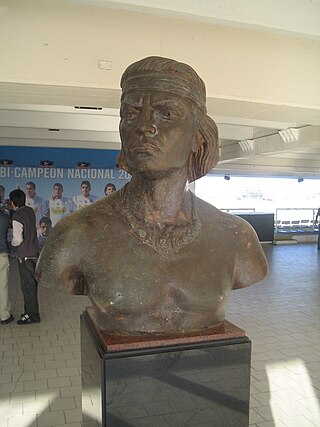
Colocolo was a Mapuche leader in the early period of the Arauco War. He was a major figure in Alonso de Ercilla y Zúñiga's epic poem La Araucana, about the early Arauco War. In the poem he was the one that proposed the contest between the rival candidates for Toqui that resulted in the choice of Caupolicán. As a historical figure there are some few contemporary details about him. Stories of his life were written long after his lifetime and display many points of dubious historical accuracy.
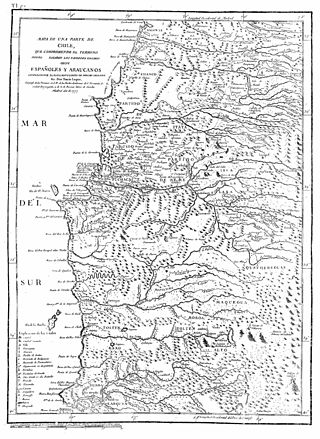
The Arauco War was a long-running conflict between colonial Spaniards and the Mapuche people, mostly fought in the Araucanía region of Chile. The conflict began at first as a reaction to the Spanish conquerors attempting to establish cities and force Mapuches into servitude. It subsequently evolved over time into phases comprising drawn-out sieges, slave-hunting expeditions, pillaging raids, punitive expeditions, and renewed Spanish attempts to secure lost territories. Abduction of women and war rape was common on both sides.

Toqui is a title conferred by the Mapuche on those chosen as leaders during times of war. The toqui is chosen in an assembly or parliament (coyag) of the chieftains (loncos) of various clans (Rehues) or confederation of clans (Aillarehues), allied during the war at hand. The toqui commanded strict obedience of all the warriors and their loncos during the war, would organize them into units and appoint leaders over them. This command would continue until the toqui was killed, abdicated (Cayancaru), was deposed in another parliament, or upon completion of the war for which he was chosen.
The Battle of Curalaba is a 1598 battle and ambush where Mapuche people led by Pelantaru soundly defeated Spanish conquerors led by Martín García Óñez de Loyola at Curalaba, southern Chile. In Chilean historiography, where the event is often called the Disaster of Curalaba, the battle marks the end of the Conquest of Chile period in Chile's history, although the fast Spanish expansion in the south had already been halted in the 1550s. The battle contributed to unleash a general Mapuche uprising that resulted in the Destruction of the Seven Cities. This severe crisis reshaped Colonial Chile and forced the Spanish to reassess their mode of warfare.
Alonso García de Ramón was a Spanish soldier and twice Royal Governor of Chile: first temporarily from July 1600 to February 1601, and then from March 1605 to August 1610. He was born in Cuenca, Spain in 1552.
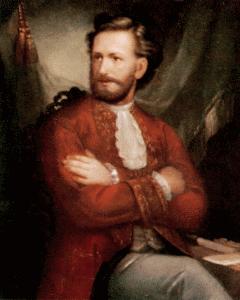
Gabriel Cano de Aponte was a Spanish soldier who served as Royal Governor of Chile from 1717 to 1733. His administration was the longest of all Colonial Governors and the second longest in the history of Chile after the administration of General Augusto Pinochet, who surpassed him by some eight months.
Illangulién, Quiromanite, Queupulien or Antiguenu, was the Mapuche toqui elected to replace Lemucaguin or Caupolicán the younger in 1559 following the Battle of Quiapo to his death in battle in the Battle of Angol in 1564.
Caupolicán the Younger according to Juan Ignacio Molina was the son of the toqui Caupolicán. He was made toqui following the capture and execution of his father in 1558. He continued the first Mapuche rising against the Spanish conquistadors in 1558 and commanded the Mapuche army in constructing a pukara at Quiapo to block García Hurtado de Mendoza from rebuilding a fort in Arauco completing the chain of forts for suppression of their rebellion. In the Battle of Quiapo the Mapuche suffered a terrible defeat and there Caupolicán the younger died. His successor as toqui was Illangulién.
Cadeguala or Cadiguala was a Mapuche toqui elected in 1585 following the death in battle of the previous toqui Nangoniel. Cadeguala was a noted warrior and the first Mapuche toqui known to have used cavalry successfully in battle. He was killed in a duel with the garrison commander of the Spanish fort at Purén in 1586.
Paineñamcu or Paynenancu or Alonso Diaz, was the Mapuche toqui from 1574 to 1584. Alonso Diaz was a mestizo Spanish soldier offended because the Governor of Chile did not promote him to the officer rank of alféres, who subsequently went over to the Mapuche in 1572. He took the Mapuche name of Paineñamcu and because of his military skills was elected toqui in 1574 following the death of Paillataru.
Nangoniel was the Mapuche Toqui in 1585, and son of the previous toqui Cayancaru. He was the first Toqui to use cavalry with the Mapuche army.
Cayancura, or Cayeucura, was a Mapuche leader native to the region of Marigüenu, chosen as toqui in 1584 to replace the captured Paineñamcu. His one great operation was an attempted siege of the fort at Arauco that failed, leading to his abdication of his office in favor of his son Nangoniel in 1585.
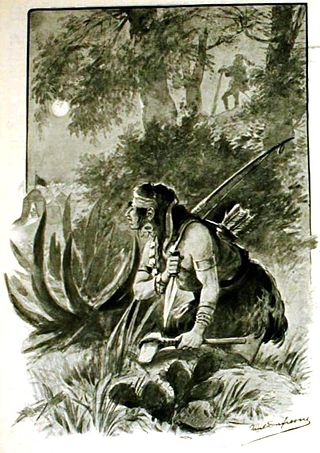
Lientur was the Mapuche toqui from 1618 to 1625. He was the successor to Loncothegua. Lientur with his vice toqui Levipillan was famed for his rapid malóns or raids. Because of his ability to slip back and forth over the Spanish border between its fortresses and patrols and raid deep into Spanish territory north of the Bio-Bio River without losses he was called the Wizard by the Spanish.
Loble, also known as Lig-lemu or Lillemu,(d. ca. 1565) was the Mapuche vice-toqui of the Moluche north of the Bio-Bio River who led the second Mapuche revolt during the Arauco War.
Pedro de Avendaño a Spanish soldier that had arrived in Chile with the army of García Hurtado de Mendoza in 1557. He distinguished himself in the Battle of Millarapue. He later served in the garrison of Cañete under captain Alonso de Reinoso. Reinoso eventually found an Indian who betrayed the location of the fugitive Mapuche toqui Caupolicán. Avendaño, with 50 men and the traitorous Indian as a guide, marched in stormy weather into the mountains to Pilmaiquén and captured Caupolicán as he was planning a new counter-offensive against the Spanish, near the modern Antihuala, on February 5, 1558. He brought the toqui back to Cañete where he was eventually executed by impalement at the order of corregidor Reinoso.
Guanoalca was the Mapuche toqui (leader) elected in 1586 following the death in battle of the previous toqui, Cadeguala, killed in a duel with the garrison commander of the Spanish fort at Purén in 1586. He returned to continue the siege and forced the Spanish to evacuate the fort, which he then destroyed.
The Parliament of Malloco was held between governor Juan Henríquez de Villalobos and leaders of the Mapuche in January 1671, at Malloco southwest of Santiago, Chile.
Butapichón or Butapichún or Putapichon was the Mapuche toqui from 1625 to 1631, as successor to Lientur. After the death of Quepuantú in 1632 he became toqui once again from 1632 to 1634.
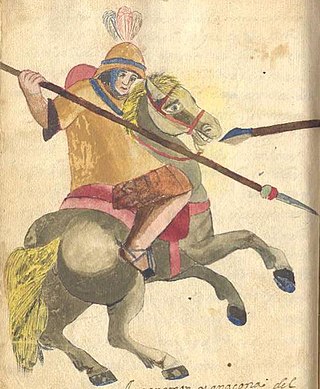
Anganamón, also known as Ancanamon or Ancanamun, was a prominent war leader of the Mapuche during the late sixteenth and early seventeenth centuries and a Toqui from. Anganamón was known for his tactical innovation of mounting his infantry to keep up with his cavalry.
The Mapuche uprising of 1723 was a rebellion of the Mapuche against the Spanish Empire and its colonial administration in present-day Chile. It began with the killing of Pascual Delgado by Mapuches and continued until Mapuche factions begun to sue for peace in 1725. The Spanish reinforced the fort of Purén, and most of the Spanish managed to find refuge in the various forts without being intercepted or harassed by Mapuches. On August Mapuche toki Vilumilla pushed north occupying Isla del Laja, that is the lands between Bío Bío and Laja rivers. The Spanish led by Manuel de Salamanca attacked a Mapuche encampment of warriors August 24, a day of heavy rain. The Mapuche initially fought with tenacity but came to believe they were being surrounded so they fled the scene.
References
- ↑ According to Juan Ignacio Molina, The Geographical, Natural, and Civil History of Chili, Vol. II, Chap. 10 pg. 297–298; Vilumillas object was the expulsion of the Spaniards from the whole of Chile. To succeed in this he sought, like Lautaro, to obtain the support of the Picunche, Promaucaes and all the other Chilean Indians, from Peru to the Bio-bio River. After killing three or four Spaniards, and one of the Captains of Friends in a skirmish, Vilumilla dispatched messengers, with one of their fingers, to the natives in the Spanish provinces, inviting them to revolt at a signal of fires upon the tops of the highest mountains in their provinces. On the 9th of March, 1723, the day of the declaration of hostilities, fires were set upon the mountains of Copiapo, Coquimbo, Quillota, Rancagua, Colchagua, Maule and Itata. However for various reasons the natives in the north, made no movement.
